9 Healthy Sesame Oil Substitutes
When you buy through our links, The Breslin may earn an affiliate commission. Learn more
Wanting to have some sesame oil taste but run out of it? Well, in this article, I shall present to you the top 9 most satisfactory substitutes:
- Peanut Oil
- Tahini
- Avocado Oil
- Olive Oil
- Canola Oil
- Perilla Oil
- Walnut Oil
- Do-It-Yourself Sesame Oil
- Roasted Sesame Seeds
Not only do you learn about their strong points and usages, but you will also know what oil will replace which kind of sesame oil the best.
So, what are you waiting for?
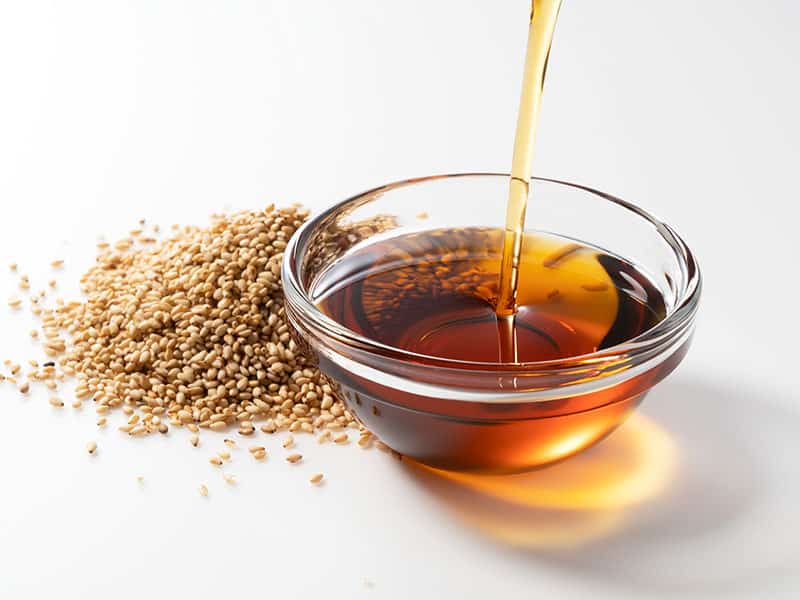
What Is Sesame Oil?
First, we need to know what sesame oil is to find out a suitable replacement for it. Like its name suggests, sesame oil is made from sesame seeds. Its distinctive traits are the rich nutty flavor and the golden brown color.
Sesame oil is a preferable oil in many Asian dishes, from salads to savory ones. It can be used to improve the flavors or as an aroma enhancer. Even just some drops of sesame oil can change the taste completely, bringing forth a deep, satisfying feeling for the eaters.(1)
Sesame Oil’s Health Benefits
There are some reasons why recently, so many chefs use sesame oil in their cooking. And most of the time, this always comes down to its health benefits.

Boost Bone Quality
Sesame oil is an excellent source of copper, zinc, and calcium, which help to reduce the risk of osteoporosis or other bone-relating diseases in older people. Those minerals also boost bone growing or healing speed.
Increase Heart Health
Apart from those minerals, sesame oil also includes polyphenols. These micronutrients can protect you from getting the cardiovascular disease or likewise. Sesame is also low in saturated fats, keeping cholesterol in check and enhancing blood circulation.
Also, eating dishes with sesame oil will increase the red blood cells production speed, leading to a healthier body.
Control Anxiety, Depression, And Stress
For people suffering from anxiety, depression, or stress, eating some dishes with sesame oil can help to reduce the symptoms. Because in the sesame oil, there is an amino named tyrosine, which can improve the serotonin level, lightening your mood.
Prevent Cancer
Sesame oil eaters can avoid the risk of getting certain cancers as this oil has some chemical compounds, like sesamol or sesamin, that can slow down or stop the cancer cells from developing. Sesame oil can even produce some antibodies to annul cancer cells. (2)
Two Types Of Sesame Oil
Sesame oil is divided into many types, but most of the time, people would know about these two: Light sesame oil (or the unroasted one) and dark sesame oil (or the roasted one).
Light Sesame Oil
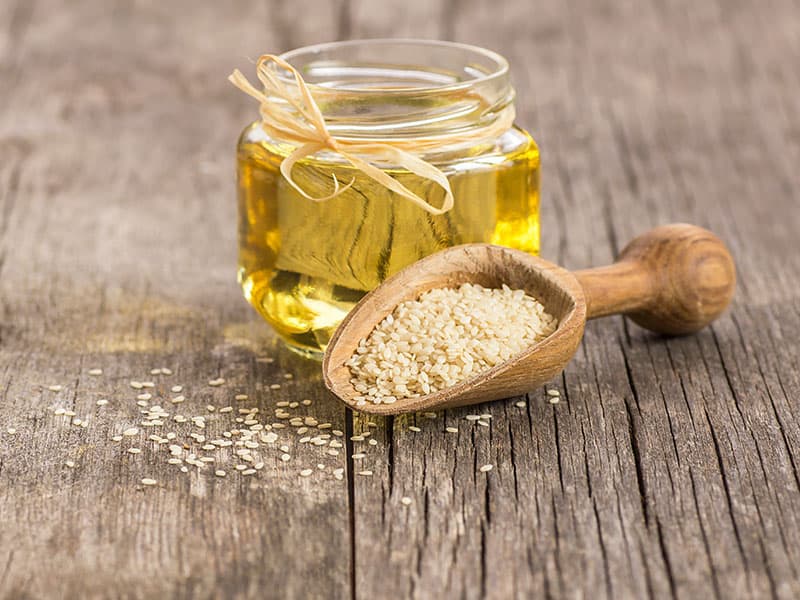
The light one is made from unroasted sesames. Therefore, it possesses a lighter color and a milder, more neutral taste. This flavor makes unroasted oil one of the top choices when cooking. You can use it in various dishes, especially frying and grilling. It’s also easier to replicate this kind.
Dark Sesame Oil
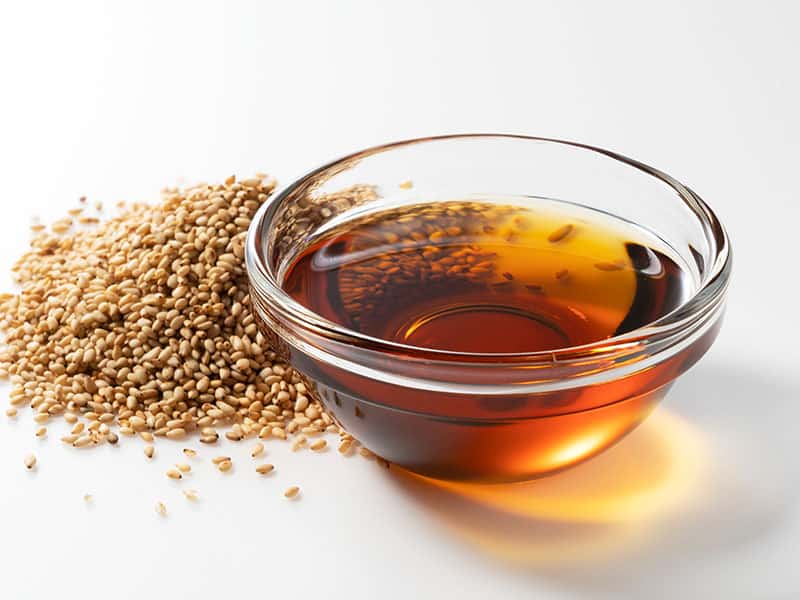
And here is the dark, roasted sesame oilCompared to the light oil, the roasted one is darker in color, and its flavor is also more affluent and nuttier. You can taste the sesame flavor in it. Because of that, finding its substitute is much more difficult. Roasted sesame oil is usually used in salads or deep-frying, stir-frying dishes.
Apart from those, there are some different sesame oil types: Unrefined one, black one, etc. However, in this article, I will only focus on the replacement of the two above kinds.
Light Sesame Oil Substitute
Since unroasted sesame oil has a lighter flavor, it’s easy to find some replicas for it. However, those replacements still need to possess a decent rich flavor and high heat tolerance.
Peanut Oil
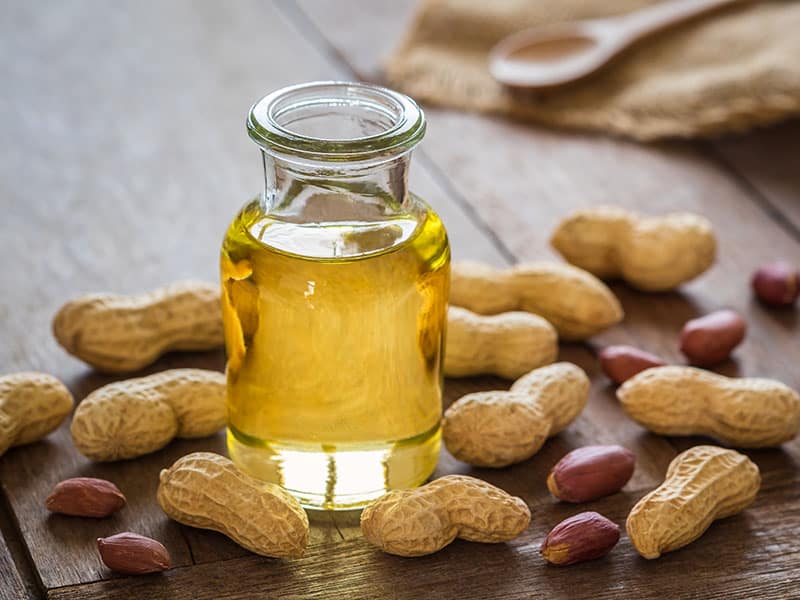
Though it’s milder, peanut oil is the favorable choice if you want your dish to have a nutty but not-so-rich flavor. Since it can tolerate high heat, you can use peanut oil in various frying recipes, like deep-frying, stir-frying, wok-frying, and many more.
Moreover, peanut oil brings so many benefits to your health, especially for those on diets. It’s because this oil is cholesterol-free, keeping your cholesterol at an appropriate level. This can help you avoid heart disease.
Peanut oil can even reduce your weight and boost the white cell production process, making your body more resistant to foreign intruders like viruses. Despite all these strengths, be careful when applying this oil because it has a high allergy index.
Tahini
Tahini is an oily paste made by grounding soaked raw sesame seeds. That’s why this paste has the same richness and nutty taste as sesame oil. However, because that’s in paste form, you can’t use Tahini in cooking. Most of the time, it acts as a dressing or seasoning.
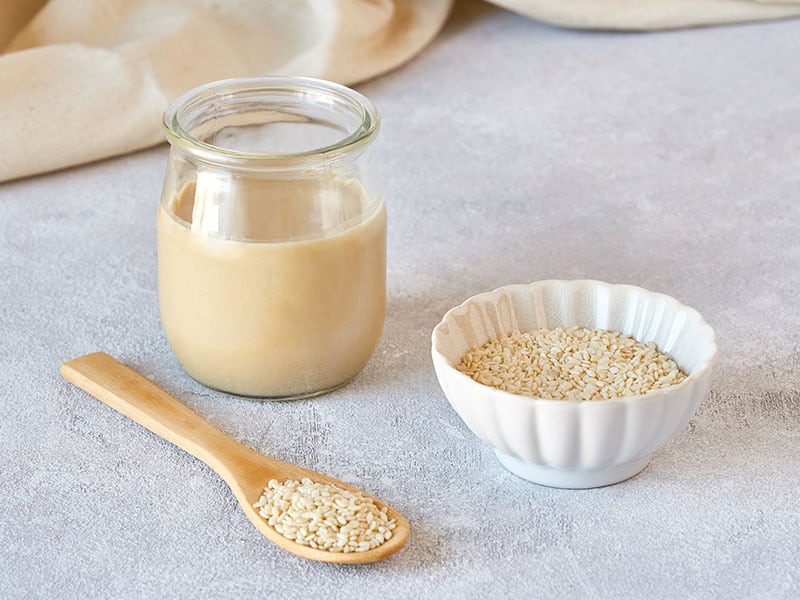
However, if you still want to use it as some oil, you can mix the Tahini paste with some neutral oil, like vegetable oil or canola oil. Pay attention to the oil’s heat resistance before mixing, especially when you’re going to do some dishes requiring high temperature.
Tahini contains many valuable nutrients, just like sesame oil. But mixing it with other oils may increase the cholesterol amount, affecting badly on your health.
You can watch this video to know how to make Tahini paste on your own.
Avocado Oil
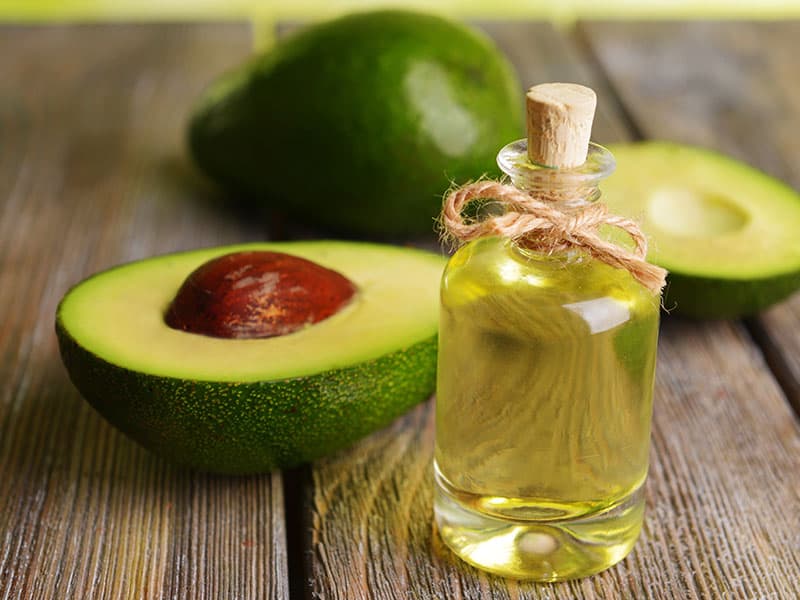
Since it’s made from avocado pulp, there’s hardly any nuttiness in this oil. However, its creamy richness can compensate for that absence. If sesame oil’s texture is all you need to replicate, then avocado oil is a perfect choice.
Moreover, this oil provides numerous health benefits. Avocado oil is packed with omega 9 fat and oleic acid, two necessary minerals to increase heart quality and lessen cholesterol. It also possesses numerous nutrients like vitamin E, lecithin,…. and antioxidants.
Thanks to all these pluses, you can use avocado oil in any grilling, roasting, or frying dishes without worrying too much about your health. Unfortunately, avocado is not commonly found in typical food markets.
Olive Oil
Olive oil is not the most promising substitute choice when it comes to flavor or texture. But instead, it provides as much help as sesame oil to our health. Same with sesame oil, olive oil can maintain cholesterol levels at an appropriate amount.
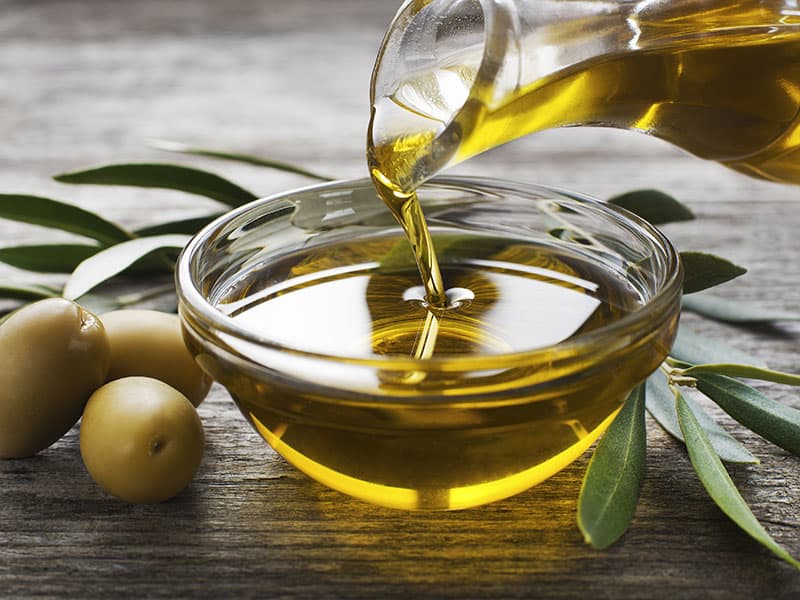
Other olive oil’s strong points are curing pancreatitis and Alzheimers, controlling depression, enhancing heart condition and bones’ quality. Do you know what’s better? It’s that you can find olive oil almost everywhere, from supermarkets to usual grocery stores.
Olive oil is used in almost every dish, mainly as a salad dressing. But keep in mind that since olive oil doesn’t have much flavor, you won’t get any extra dimensions in your dish. Extra virgin olive oil tastes much better but also is more difficult to find.
Canola Oil

If you run out of options, then it’s time to rummage through the kitchen for a bottle of canola oil. I bet you’d have one somewhere because nowadays, almost every housewife (or househusband) owns one, or at least the grocery store does.
Since canola oil doesn’t have any distinct taste, its best replacement is light sesame oil. Even that, don’t count on it to improve the flavor of your dishes. That’s why you should use canola oil only in recipes that don’t require flavor additions.
All in all, canola oil is still a decent alternative when you run out of sesame oil and need a quick fix as it’s the most healthy oil among all the cooking oils.
Dark Sesame Oil Substitute
Different from the unroasted one, this dark type has a robust nutty flavor. Therefore, it’s more challenging to find a decent replacement for it. But after searching and searching, here I present you four proper choices:
Perilla Oil
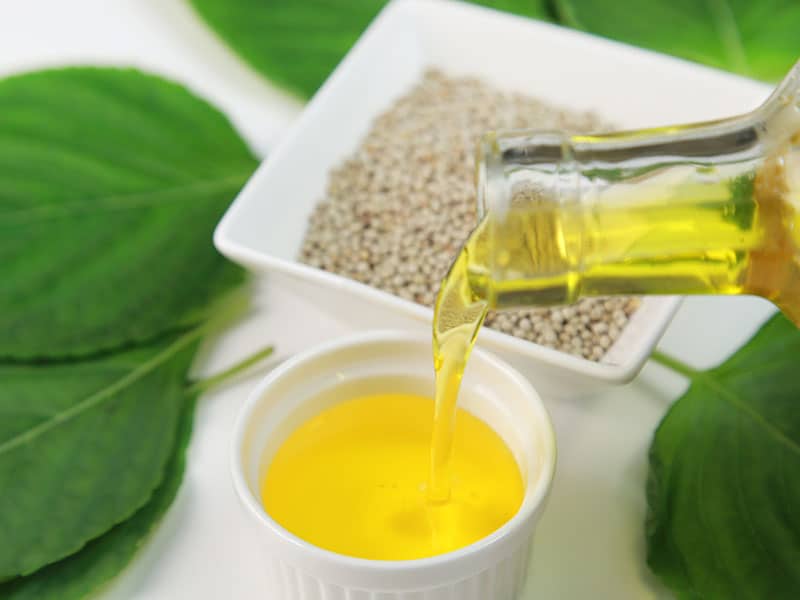
In terms of taste, perilla oil is the most suitable substitute for sesame oil as it’s also made from seeds, perilla seeds to be precise. Therefore, it also has the same nutty, earthy, full-flavored taste, just like sesame oil.
You can use it as dressings for your salads or in Asian stir-fry dishes. Perilla oil’s good for your heart and brain health as it contains omega 3 fats. Moreover, it can even prevent breast cancer and various allergies.
However, you can hardly find it in regular stores, but you can bet your luck at some Asian shops. One more disadvantage of perilla oil is it can increase your cholesterol level. People on diets should avoid it immediately.
And make sure to check if you are allergic to any ingredients in perilla oil before using it.
Walnut Oil
As this name suggests, walnut oil obviously carries the same nutty taste as sesame oil. However, this oil will burn and turn bitter when heated. Therefore, it’s recommended to use walnut oil only to marinade or as a dressing.
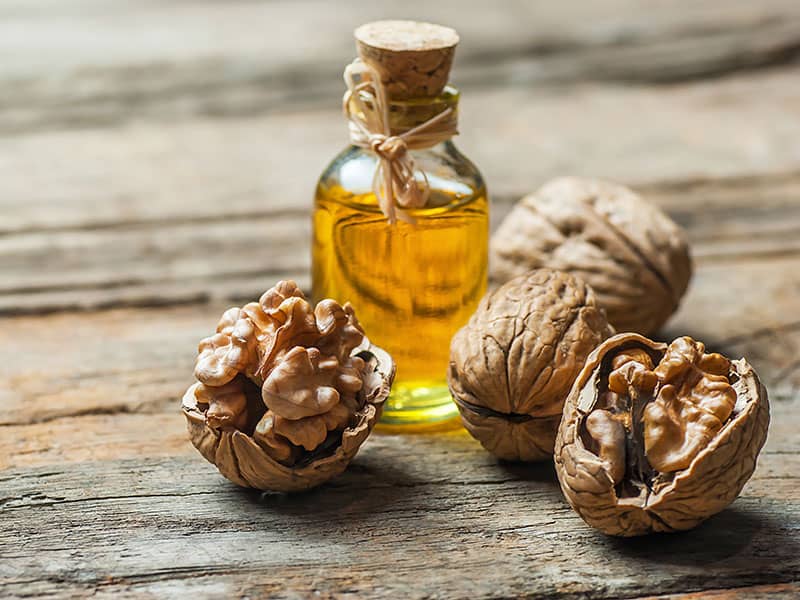
Walnut oil can enhance your health as it’s rich in omega 3 fat. Some numerous antioxidants and minerals benefit your body in this oil. But those come with a price. And let me tell you, walnut oil’s price is pretty high. So, think carefully before buying!
Do-It-Yourself Sesame Oil
If you are desperate for some roasted sesame oil but only find some neutral ones in the kitchen, canola oil for instance, then it’s time to make one yourself. It might take time but can be cheaper and more suitable with your taste.
You’ll need ¼ cup of sesame seeds for each cup of light oil (such as canola oil). Then, follow these steps:
Step 1: Toast The Sesame Seeds
Spread the seeds on the wok or a skillet. Set your stove at 35°F. Toast them for nearly 10 minutes. Make sure to shake your pan every once in a while so the seeds wouldn’t stick together.
Step 2: Add The Oil
Pour the oil into the pan and change the temperature to medium heat. Continue cooking until the seeds turn brown. If you smell something burning, remove the skillet immediately.
Step 3: Cool The Mixture
Next, put the mixture into the blend. Then, let the blended one rest for roughly 2 hours to completely cool down. After that, strain the seeds, and you’ve got yourself some roasted sesame oil.
You can use this DIY sesame oil either for marinating or in fried dishes. Depending on which neutral oil you use, this DIY oil will have the same effect. Remember that you can only keep DIY sesame oil in the fridge for up to two weeks, so make a reasonable amount.
This video is a suggestion for you on how to make DIY sesame oil.
Roasted Sesame Seeds
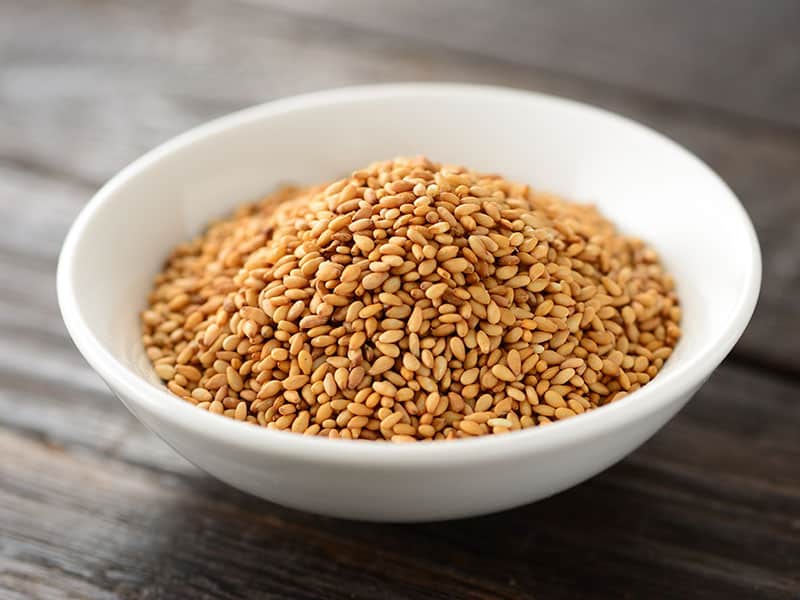
If you want to add some sesame flavors to your food, roasted sesame seeds are just what you need. It’s pretty easy to make some on your own. Get yourself a skillet and a small number of sesame seeds.
Spread these on the pan’s surface and roast them at low heat until all of the seeds turn golden brown and fragrant. Shake the pan so that they’re charred on both sides. It’d be better to use a non-stick pan instead of a normal one.
You can use those roasted sesame seeds as a garnish for your salads or cakes. But sprinkle them bit by bit and taste after every try because the sesame seeds’ flavor can overshine the main ingredients.
Frequently Asked Questions About Sesame Oil’s Substitute
To this point, I believe you’ve gotten some knowledge about sesame oil and its replacements. But as always, there are always some questions that everyone has in their mind. And you can scroll down right now for the answers.
Further Information
You can store sesame oil in the fridge for a year. Still, the oil will turn foul if you leave it for too long. You can notice it right away with the smell. There’s no sesame smell, but a fragrance of paint thinner or nail polish remover instead.
In case the smell stays the same but you’re still unsure, look at the color. If it turns darker and murkier, then that’s the symptom. Most of the time, eating rancid sesame oil doesn’t affect your health much, but mainly your dish quality.
If you know anything else concerning sesame oil and its substitutes, don’t hesitate to share it vid comment. Remember to share this article with your family, friends, or anyone you think will need it!
References:
- En.wikipedia.org.. Sesame oil – Wikipedia. [online] Available at: <https://en.wikipedia.org/wiki/Sesame_oil>.
- Balanced Care.. 6 Health Benefits of Sesame Seed Oil and How it Can Improve Your Health. [online] Available at: <https://balancedcarend.com/health-benefits-of-sesame-seed-oil/> .
- Medicalnewstoday.com.. Sesame allergy: Symptoms, foods to avoid, and treatment. [online] Available at: <https://www.medicalnewstoday.com/articles/322743#foods-to-avoid> .

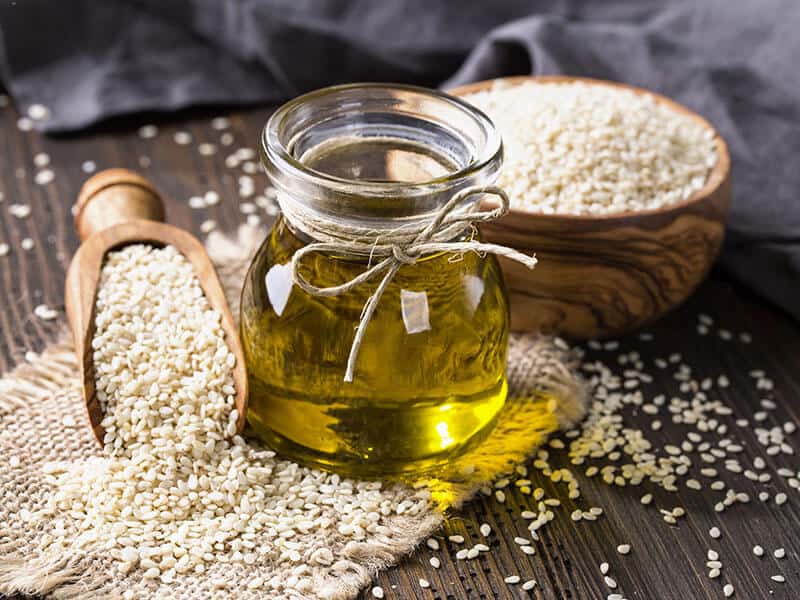






Amanda Collins
Founder and Senior Culinary Editor
Expertise
Culinary Arts and Management, Food Journalism and Critique, Recipe Development and Testing, Global Culinary Traditions, Sustainable Food Practices
Education
Institute of Culinary Education (ICE), New York, NY
Program: Diploma in Culinary Arts
Focus: Intensive hands-on training in culinary techniques, recipe development, and kitchen management, preparing students for professional roles in the culinary industry.
Monroe College, New Rochelle, NY
Program: Associate in Applied Science in Culinary Arts
Focus: Practical culinary skills, including cooking techniques, menu planning, and kitchen operations, with an emphasis on hands-on experience and industry standards.
Amanda Collins is a seasoned chef and food editor with a deep love for global flavors. Trained at the Institute of Culinary Education and Monroe College, and with over 15 years in the culinary field, Amanda has refined her skills in kitchens worldwide. Her background in food studies gives her a unique ability to share both recipes and the cultural stories that shape them.
As senior culinary editor at thebreslin.com, Amanda’s work brings authentic dishes to life, inviting readers to explore new flavors and techniques from around the globe. Her approachable style makes it easy for anyone to bring a bit of the world’s cuisine into their kitchen.